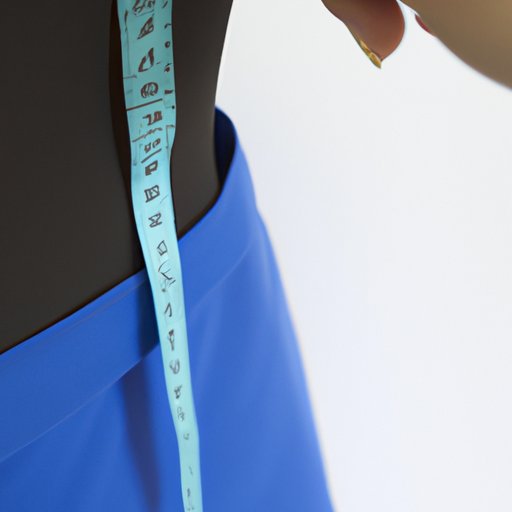
I. Introduction
Measuring inseam is an important aspect of finding clothes that fit properly and flatter your body. Whether you’re shopping for jeans, pants, or activewear, understanding your inseam measurement is crucial. Unfortunately, many women find measuring their inseam a daunting task and often get inaccurate measurements, which can lead to poorly fitting and uncomfortable clothing. In this article, we’ll provide you with a comprehensive step-by-step guide on how to measure inseam for women, highlight common mistakes to avoid, and present different measurement methods for varying body types.
II. Step-by-Step Guide to Measuring Inseam
Before we dive into the details of how to measure inseam, it’s essential to have the right tools to hand. You’ll need:
- A soft, flexible measuring tape
- A pair of form-fitting pants or shorts
- A flat surface
With these tools in hand, you’re ready to measure your inseam:
- Put on your form-fitting pants or shorts.
- Standing barefoot on a flat surface, make sure your legs are about hip-width apart.
- With the measuring tape, begin at the crotch of your pants or shorts, and run the tape down the inside of your leg to the ankle bone. Make sure the tape is straight and as close to the skin as possible without being too tight.
- Record the measurement in inches or centimeters to the nearest quarter inch or half-centimeter.
If you don’t have access to form-fitting pants or shorts, you can take your inseam measurement from the inside of your leg. Just stand barefoot on a flat surface, and use the same method as above from your crotch to your ankle bone. However, make sure to add one inch to your measurement to account for the added length of pants or shorts.
Measuring inseam can take a bit of practice to get used to, so don’t worry if you don’t get it perfect the first time.
III. Common Mistakes to Avoid
Even with the right tools and technique, it’s still possible to make errors when measuring your inseam. Some common mistakes to watch out for include:
- Wearing bulky clothes or shoes that can affect the accuracy of your measurement.
- Not standing upright and looking ahead, which can cause a non-straight measurement.
- Stretching the measuring tape too tight, which can result in a shorter inseam than what is accurate.
- Measuring at an angle rather than vertically, which can lead to incorrect measurements.
To avoid these mistakes and achieve accurate measurements, try measuring in form-fitting clothing while standing straight and looking ahead. Use a flexible measuring tape to ensure that the length is accurate, and make sure that the tape is snug against your skin but not too tight.
IV. Measurement Methods for Different Body Types
It’s important to note that inseam measurements can vary based on body type. Taller women often have longer inseams, while shorter women have shorter inseams. Women with athletic builds may have longer inseams due to their larger leg muscles, while pear-shaped women may have shorter inseams due to wider hips. It’s essential to measure for your specific type of body to get the best inseam measurement.
If you’re struggling to get an accurate measurement, try different techniques based on your body type. Here are some tips:
- For tall women, try using a taller measuring tape or measure from a higher point.
- For pear-shaped women, try measuring from the inside of the leg to the ankle bone rather than the crotch.
- For women with larger leg muscles, make sure to measure the circumference of your thighs to get the right inseam.
By understanding the different measurement methods and techniques, you can ensure a more accurate inseam measurement that will lead to better-fitting clothing in the long run.
V. Benefits of Measuring Inseam
Knowing and measuring your inseam can have numerous benefits for women. Here are some reasons why you should measure your inseam:
- Find the perfect pants length: An accurate inseam measurement will ensure that your pants or jeans are the right length, avoiding bunching or dragging on the floor.
- Determine bike or exercise equipment settings: If you’re an avid cyclist or gym-goer, measuring inseam ensures that you are using equipment that is suitable for your body and assists with proper form and technique.
- Improve clothing fittings: With an accurate inseam measurement, you can buy clothes that fit you perfectly, improving your looks and confidence.
VI. Conclusion
Measuring your inseam might seem complicated at first, but with the right tools and techniques, you can do it accurately. By following our step-by-step guide, avoiding common mistakes, and using the appropriate measurement methods based on body type, you can achieve an accurate inseam measurement and enjoy better-fitting clothing and equipment. The benefits of measuring your inseam are numerous, and we encourage women to take the time to measure their inseam and use this newfound knowledge in future purchases.





